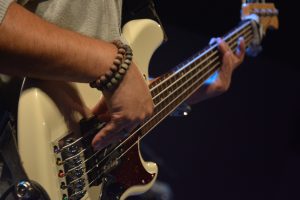Heavy Metal Music
The tougher side of rock music has always attracted some people, and it has in fact been around for many years now. It is hard to pinpoint the exact start of so-called hard rock music, but it roughly saw the light of day in the late sixties. American guitarist Jimi Hendrix introduced some new sounds to rock music, with the introduction of distorted guitar sound. This automatically made the music sound rougher and “heavy”, combined with suitable riffs. In the late sixties, bands like Deep Purple and Black Sabbath emerged on the musical scene delivering heavier music to an enthusiastic crowd. These bands were soon to be followed by others, due to the rising popularity of the new musical genre.
with the introduction of distorted guitar sound. This automatically made the music sound rougher and “heavy”, combined with suitable riffs. In the late sixties, bands like Deep Purple and Black Sabbath emerged on the musical scene delivering heavier music to an enthusiastic crowd. These bands were soon to be followed by others, due to the rising popularity of the new musical genre.
The UK was for a very long time market-leading in the heavy metal music industry. Bands like Iron Maiden were hugely popular and almost became a benchmark for other bands, who copied the sound of their heroes. Heavy Metal music has always been the band wagon for rebellious youngsters, and a way of expressing themselves through a certain lifestyle. The sense of belonging plays an important role in heavy metal music. With the music, follows a certain image. Fore more than two decades, hard rock was  associated with long hair – both for fans and musicians.
associated with long hair – both for fans and musicians.
Traditionally, hard rock music was based on drums, bass, vocals, guitar – and sometimes keyboards or organ. In the late sixties and seventies, many rock bands used the organ as an important part of the sound. Music from bands like Deep Purple, with keyboardist Jon Lord, and Uriah Heep were heavily influenced by the organ.  On the other hand, Birmingham-based band Black Sabbath did not use the organ at all. This instrument was later replaced by synthesizers, as this presented the keyboardist with more options in terms of sounds.
On the other hand, Birmingham-based band Black Sabbath did not use the organ at all. This instrument was later replaced by synthesizers, as this presented the keyboardist with more options in terms of sounds.
Heavy Metal and hard rock music were, more or less, quite influenced by keyboards in the eighties. In fact, the keyboard sometimes put the guitar in the shadow. Bands like Europe, Bon Jovi and Journey relied to a large extent on keyboards in their sound. Many guitarists got tired of being in the shadows and started to rebel against this, resulting in various solo careers. Examples of this include Europe guitarist Jon Norum, who left the band due to constantly being mixed down on the albums.
A more melodic approach to the genre resulted in a sub genre named AOR – adult oriented rock. This was a genre fitting for bands that were not really metal, and included the aforementioned band Journey but also other famous acts like Toto.
There is furthermore a harder edge to metal in the form av sub genres Speed Metal, Thrash and Goth.



